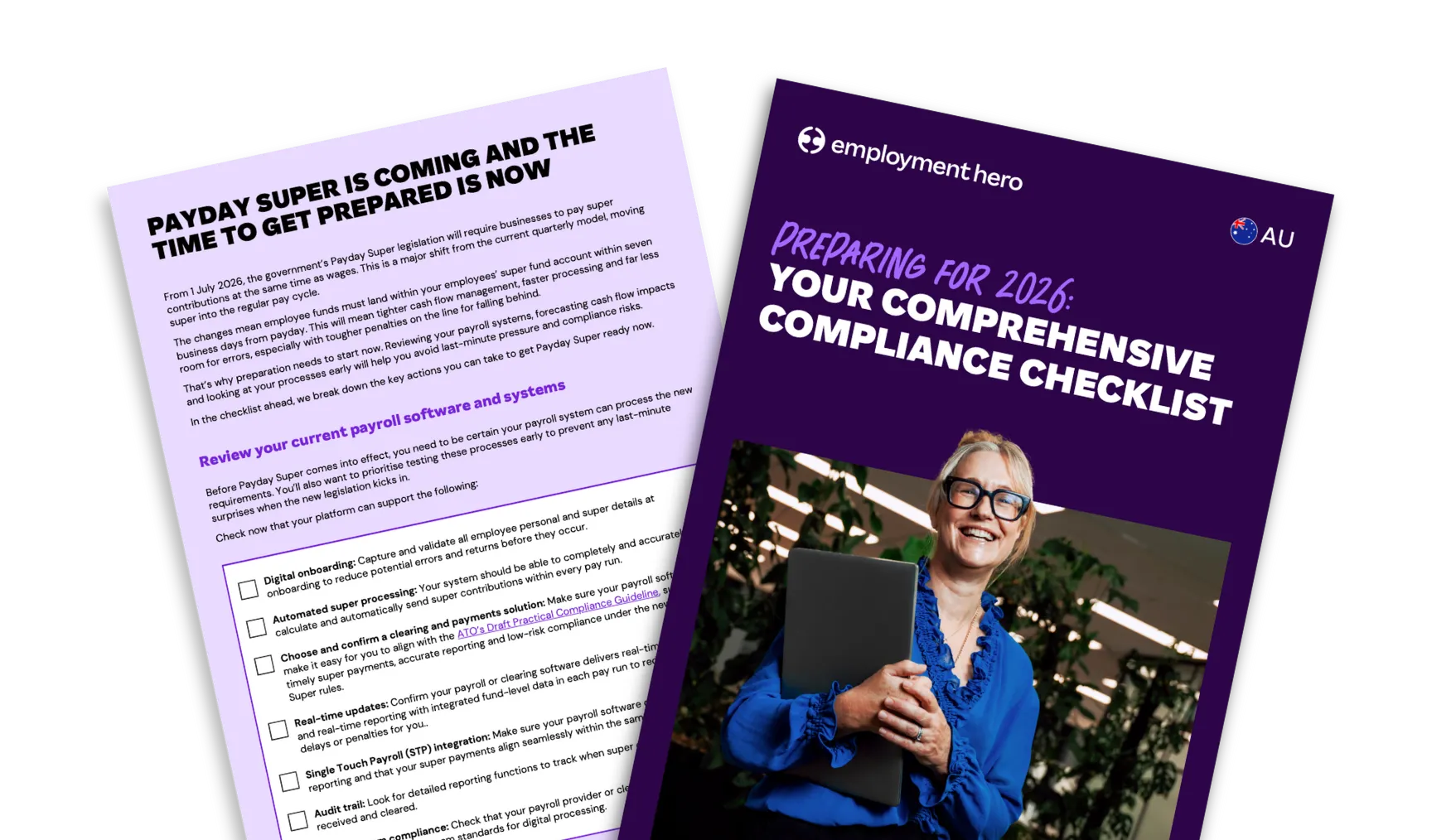Mid-Year Performance Review Template [Free Download]
Published
Mid-Year Performance Review Template [Free Download]
Published
2 min read
Regular two-way feedback is essential. And even if you already have weekly 1:1s in place, those sessions tend to focus on the current projects and roadblocks, rather than having an overarching retrospective review of the past six months.
With that said, we’ve created this template to help guide you through a mid-year review with your direct report. Acknowledging their hard work is crucial, as well as applauding any commendable results that came about. This will give them the motivation and confidence to achieve more in the future months ahead.
The goal is to take a step back and reflect together on what went well, identify any particular difficulties or roadblocks encountered, aspects or processes that can be improved on, and create an action plan for working on those weaknesses moving forward.
Disclaimer: The information in this template is current as at 5th July 2022, and has been prepared by Employment Hero Pty Ltd (ABN 11 160 047 709) and its related bodies corporate (Employment Hero). The views expressed in this template are general information only, are provided in good faith to assist employers and their employees, and should not be relied on as professional advice. The Information is based on data supplied by third parties. While such data is believed to be accurate, it has not been independently verified and no warranties are given that it is complete, accurate, up to date or fit for the purpose for which it is required. Employment Hero does not accept responsibility for any inaccuracy in such data and is not liable for any loss or damages arising either directly or indirectly as a result of reliance on, use of or inability to use any information provided in this template. You should undertake your own research and to seek professional advice before making any decisions or relying on the information in this template.
What is a Performance Review?
A performance review is an evaluation where managers, peers, or stakeholders assess an employee’s job performance over a set period. Here are the key elements:
- Strengths: Highlight the employee’s strengths, such as problem-solving or communication skills, to recognize their achievements.
- Weaknesses: Discuss areas for improvement, like teamwork or idea-sharing, to help employees grow.
- Rating System: Use a scale (e.g., exceeds expectations, meets expectations, needs development) to assess skills like communication and collaboration.
- Review Period: Measure performance over a specific time, such as annually, bi-annually, or quarterly.
- Set Goals: Establish clear, SMART goals (specific, measurable, achievable, realistic, time-bound) to guide future improvement.
While these components are standard, some soft skills, like teamwork or brainstorming, may be harder to measure but are still valuable considerations.
Benefits of Mid-Year Reviews
A mid-year review helps refocus employee performance and provides valuable feedback throughout the year. Key benefits include:
- Performance Calibration: Mid-year reviews give managers an opportunity to assess progress, provide actionable feedback, and adjust goals to ensure employees stay on track, preventing end-of-year surprises.
- Improved Review Skills: These reviews help managers refine their feedback skills before the critical end-of-year review, leading to better assessments that aid in decisions about compensation and promotions.
- More Data for Decisions: Conducting two reviews per year offers more frequent, accurate performance data, enabling better strategic decisions about team success and areas for improvement.
Mid-year and year-end reviews should serve different purposes. While the year-end review often ties performance to bonuses, mid-year reviews focus on course correction and goal alignment.
Purpose of Mid-Year Reviews
Mid-year and year-end reviews should serve different roles. While the year-end review typically evaluates performance for bonuses and compensation, the mid-year review focuses on employee development.
Mid-year reviews are not meant for salary adjustments but instead provide feedback on progress, goals, and capacity for new projects. This review helps guide employees’ growth and inform year-end compensation decisions, offering direction without the pressure of financial implications.
Now it’s your turn! Download the template now and get ready for your mid-year reviews.
Other resources:
- One-on-One Meeting Template
- Running effective 1:1s
- HR Audit Checklist Template
- 360° Review Template for Managers
Register for the template.
Related Resources
-
 Read more: HR Managers: Don’t just survive the festive season, master it
Read more: HR Managers: Don’t just survive the festive season, master itHR Managers: Don’t just survive the festive season, master it
Make year-end easier: manage leave, payroll, parties and shutdowns with confidence. Get practical tips for Australian SMEs. Download the free…
-
 Read more: Preparing for 2026: Your Compliance Checklist
Read more: Preparing for 2026: Your Compliance ChecklistPreparing for 2026: Your Compliance Checklist
Get your business ready for the 1 July 2026 changes. See practical steps for Payday Super, cash flow planning and…
-
 Read more: Monthly business budget template for employers
Read more: Monthly business budget template for employersMonthly business budget template for employers
Plan your monthly income and expenses with our free monthly business budget template. Download today to track cash flow and…























